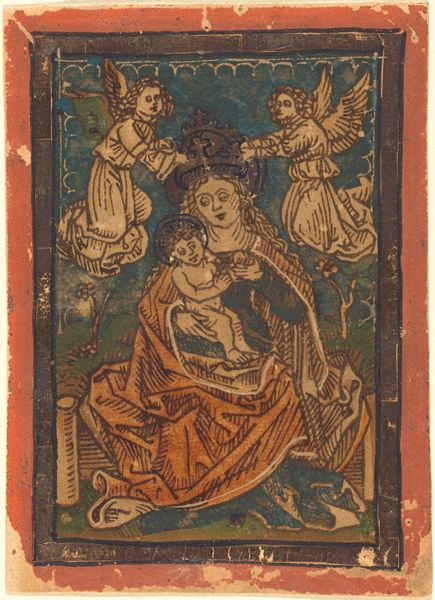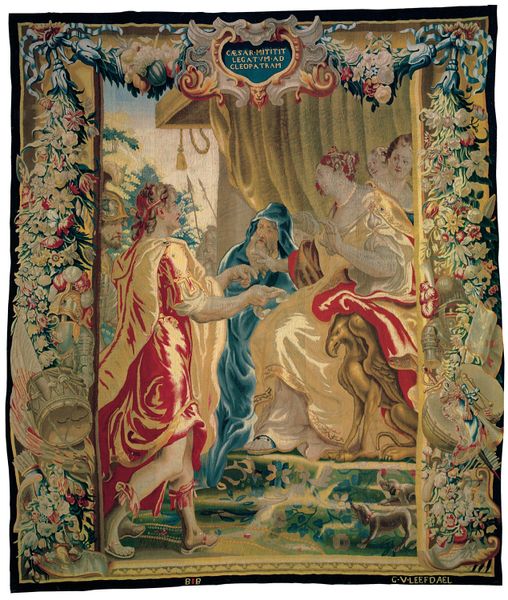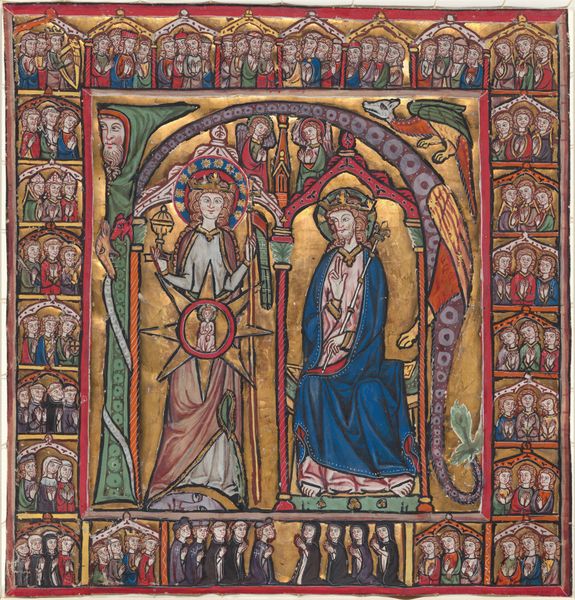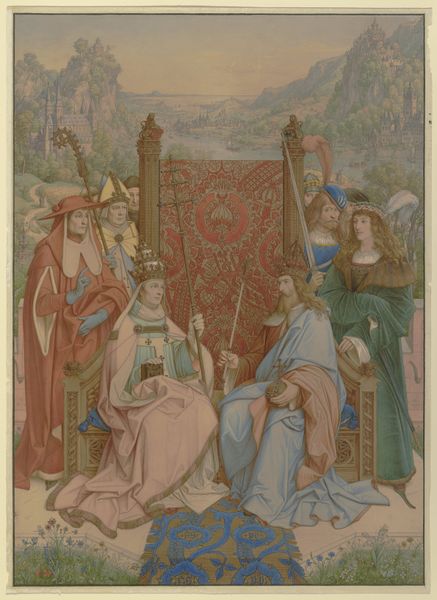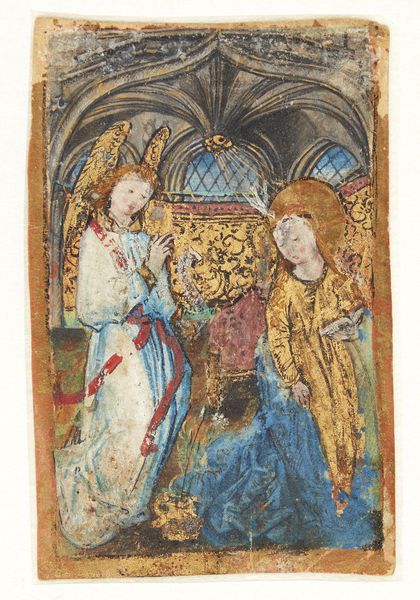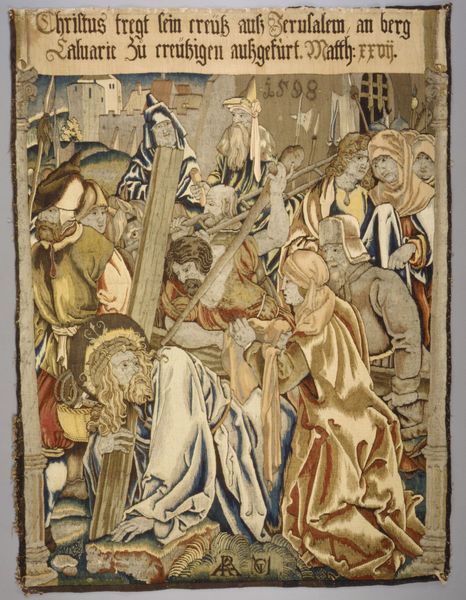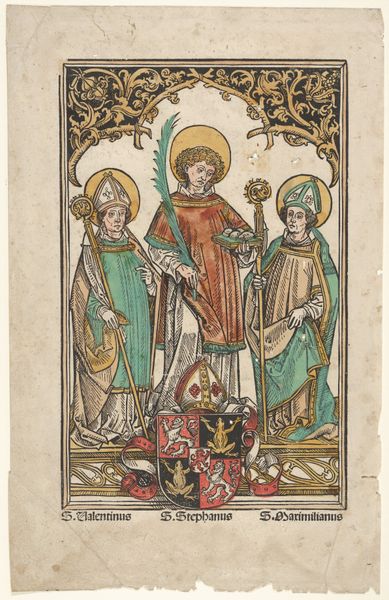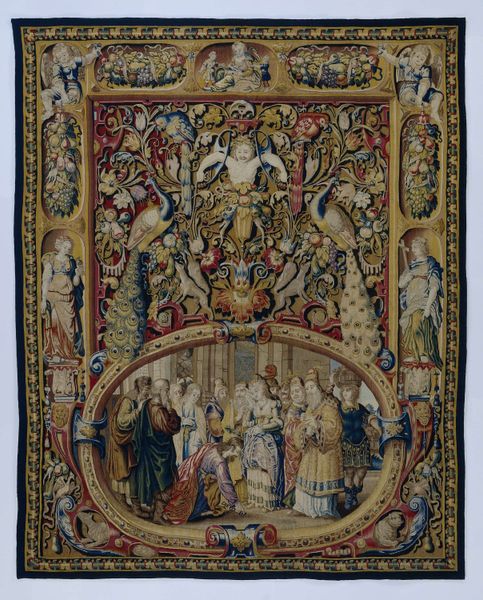
textile
#
narrative-art
#
arts-&-crafts-movement
#
textile
#
figuration
#
mural art
#
arch
#
naive art
#
christianity
#
wall painting
#
watercolor
#
angel
Copyright: Public domain
Angeli Laudantes was conceived by Edward Burne-Jones, a central figure in the British Aesthetic movement. This tapestry, now housed at the Met, reflects the cultural fascination with beauty and the revival of medieval craft traditions during the late 19th century. Burne-Jones, deeply inspired by the Pre-Raphaelites, rejected the industrial age, seeking instead an idealized past. In Angeli Laudantes, we find a group of angels, their androgynous figures draped in flowing robes, set against a dense, verdant backdrop. They are not the muscular, triumphant angels of the Renaissance, but rather ethereal beings. Burne-Jones once said, "I mean by a picture to set forth an embodiment of some noble thing". The tapestry's emotional resonance lies in its longing for spiritual harmony, a refuge from the discontents of modernity. It is a reflection of Burne-Jones's personal quest for beauty and meaning, woven into a tapestry that invites us to contemplate the possibility of grace in a world increasingly defined by industrialization.
Comments
No comments
Be the first to comment and join the conversation on the ultimate creative platform.
